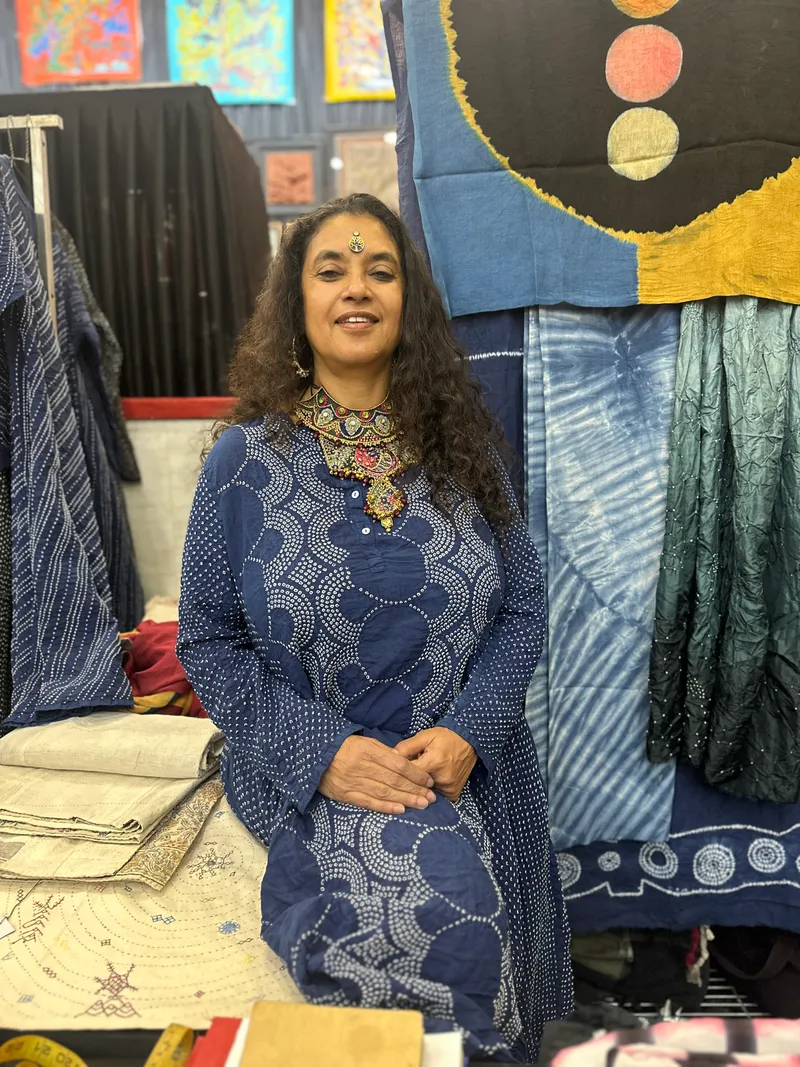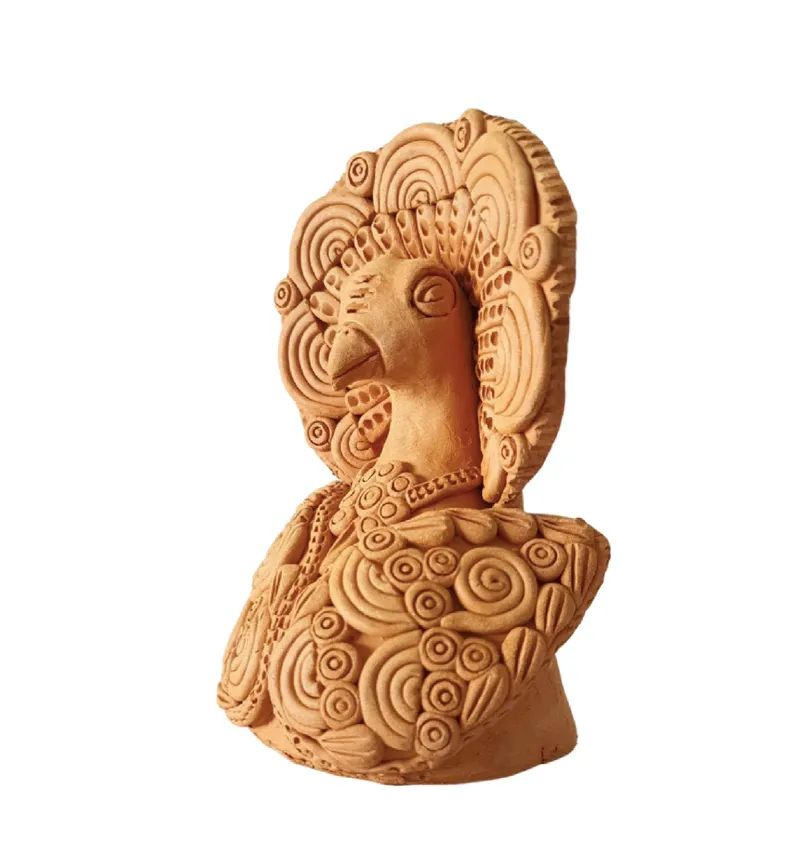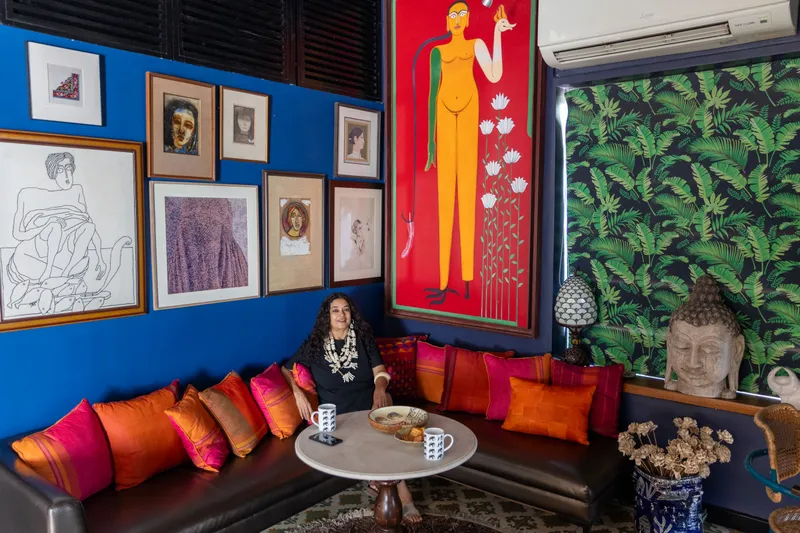Srila Chatterjee’s BARO Market makes art accessible and wearable
With the Affordable Indian Art Show, Srila Chatterjee, Co-founder and Curator of Mumbai-based BARO Market, aims to break the barriers associated with art.
Spotting Srila Chatterjee, Co-founder and Curator of BARO Market—a platform for lifestyle and crafts and art communities—is no big deal. Recently, at the BARO pop-up in Bengaluru International Centre—in a room filled with homegrown art, artisans, and curious visitors—the Mumbai entrepreneur stood out.
Srila is fond of wearable art—clad in an aubergine Baluchari saree from Bengal, she wore Odisha’s handcrafted silver filigree jewellery, and her forehead dazzled with three handcrafted jewelled bindi’s—a style only the legendary singer Usha Uthup and Srila can sport.
“Any contemporary designer that draws from a rich heritage helps to keep it (the heritage) alive,” Srila tells YS Life.
“I don’t believe in things having to be antique to be of value—it’s the craftsmanship and quality that matter… A jamdani (handloom from Dhaka that’s used to create the legacy Dhakai sarees) can look phenomenal even when it’s in a mini dress; shola (Bengal’s thermocol art, traditionally used to make Goddesses Durga’s jewellery) is spectacular even when it is carved and sandwiched between sheets of glass; Jamini Roy comes alive on a tray with painted cutlery; and kantha (Bengal’s patchwork embroidery) becomes cool on a tablecloth,” she explains.

Srila Chatterjee, Co-founder and curator of MARO Market
Founded in May 2019 as a natural progression fuelled by Srila’s passion for Indian art, design, and craft, BARO Market highlights the work of over 60 artisans, designers, and craftsmen across India.
Ethically sourced and sensibly priced, BARO Market showcases apparel, art, home decor, stationary, toys, beauty, wellness, and edibles by homegrown brands and grassroots craftsmen. It has collaborated with renowned homegrown brands across India, including 145 East, Latasita, Bhomra, Dookdi, Padukas, Shillar House, and The Bindi Project.
And yet, Srila believes, “There is an ocean out there, and all I have known is a few drops.”
Finding a calling
Born in Kolkata, Srila says, “The world of art and culture weave in and out of everything I have ever done in my life. So, making that central was just a natural progression…”
For over two decades, Srila formerly worked in the advertising industry as a producer before she shifted gears in 2018 to convert her film office in 12 Sun Mill in Mumbai’s Lower Parel into a furniture, art, and lifestyle store—BARO—meaning 12 in Bengali.

The Affordable Art Show by BARO Market
“My (ad film) shoots would take me to many places, and every discovery was enriching and exhilarating. I met makers of all kinds and was enthralled by the art and craft. Each time something captivated me, I learnt more about it and got to know the people involved. Once I formally started engaging with the ones I knew, the proverbial ripple effect introduced me to so many more…,” Srila says.
Making art affordable
Besides providing a platform to Indian designers and homegrown lifestyle brands, Srila also curates for BARO Art, which offers a diverse array of art from across India, priced between Rs 1,500 and Rs 3 lakh.
The Affordable Indian Art Show—a travelling curation of BARO Art—takes artworks to various Indian cities to break the barriers associated with art, bringing together a wide range of styles and ensuring there is something for everyone.

Artwork by Dolon Kundu
“I believe that art should be accessible to everyone… By showcasing a diverse range of styles, we hope to foster an inclusive environment where art lovers and newcomers alike can find something that resonates with them,” Srila says.
BARO Art features artwork by nearly 50 artists, including Prashant Miranda, Vikalp Mishra, Anita Alvares, Banoo Batilboi, Ashish Malakar, Gitanjali Das, and Dolon Kudu.
At each exhibition, Srila personally indulges guests and visitors, familiarising them with the artists on display and their respective work. “I don’t intellectualise art,” she says.
Adding, “I hope everyone goes away convinced there is magic to be found across India in ways that can impact their lives and the lives of so many others… I hope more people are drawn to being original instead of just following dummy trends.”
Artistic heritage with modern aesthetics
We were curious to know how Srila approaches the task of presenting India’s artistic heritage with modern aesthetics.
She says, “If it’s beautiful and finds a place in my life, that’s all that matters. Everythi

Srila Chatterjee
ng made today is contemporary by definition, and using old skills is the traditional heritage—so that mix happens organically anyway. Adding good design sense and a fine eye to the mix just helps to raise the bar.”
She shares the example of Laltu Chitrakar, a Pattachitra artists from Mednipur in West Bengal associated with BARO Art. Laltu is the eighth generation in his family to continue the tradition of Patua art.
“Laltu has taken what his forefathers did and adapted it to modern living—in size. Instead of 20 ft artwork (as done by his forefathers), he paints 7 ft canvases so it can sit easily in an apartment,” Srila adds.
Similarly, Laltu uses subtle colour tones, and his pattachitra or the painting focuses on contemporary environmental and political subjects.
Alternatively, Ek Tara Creates—a sustained income generation NGO for young women from disadvantaged backgrounds—uses jute and tant (handloom from Bengal) to upcycle them into daily use products such as laptop covers, bags, and coasters.
Recently, BARO Market travelled to Bengaluru and Delhi, and it keeps hosting special pop-ups—such as the Bengal Bazaar featuring artisans from Bengal, Assam, and Odisha—in Mumbai.
When asked about expanding geographically, Srila believes, “Scale kills many things, and that isn’t what we obsess about.” She has launched the BARO website to make artwork accessible online.
Speaking about future collaborations and concepts on the horizon, Srila says, “We respond to at least 25 new people every week, carefully reviewing every single one of them… I would love to take BARO Market to the world if only the actual systems were easier…”
Edited by Suman Singh







